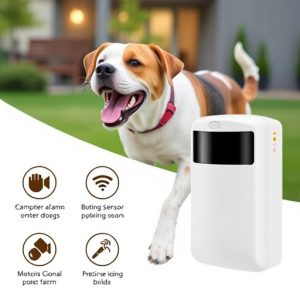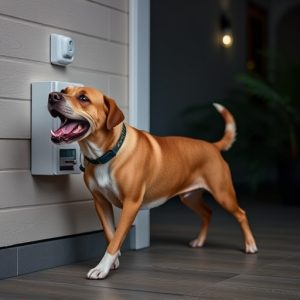Motion Sensor Barking Dog Alarms: Protect Your Home Securely
A motion sensor barking dog alarm is an innovative, pet-friendly security solution that uses advance…….
A motion sensor barking dog alarm is an innovative, pet-friendly security solution that uses advanced technology to detect intruders while triggering a loud bark to deter threats. These devices offer a peaceful and protective environment for both pets and homeowners, with features like adjustable sensitivity, night mode, remote access via smartphone apps, and integration with smart homes. Installation requires strategic sensor placement, regular maintenance, and proficiency in using the control panel and app for optimal protection.
In today’s world, ensuring your pet’s safety is a top priority for many owners. One innovative solution gaining traction is the pet security alarm system, specifically the motion sensor barking dog alarm. This article delves into the inner workings of these sophisticated devices and highlights their numerous benefits. We’ll explore different types, consider essential features, and provide practical installation and maintenance tips to optimize your pet’s protection.
Understanding Pet Security Alarm Systems: How They Work
Benefits of Motion Sensor Barking Dog Alarms
Motion sensor barking dog alarms offer a innovative and effective way to enhance pet security and protect your home. These advanced devices are designed to detect motion within a specified range, triggering a loud and impactful bark that can deter potential intruders. Unlike traditional alarms that rely on movement of objects or people, motion sensors focus specifically on detecting living beings, ensuring false alarms are minimised while still providing a powerful deterrent.
One of the key advantages of these alarm systems is their ability to train pets to recognise and respond to the alert sounds. Over time, pets can learn to associate the bark with potential danger, encouraging them to remain calm and avoid triggering the alarm unnecessarily. This feature not only enhances overall security but also fosters a sense of trust and understanding between pets and homeowners, creating a safer and more harmonious environment for everyone involved.
Types and Features to Consider
When considering a pet security alarm system, it’s crucial to understand the different types and features available. One popular option is the motion sensor barking dog alarm. These devices are designed to detect any unauthorized entry into your home while also addressing specific pet-related concerns. They typically employ advanced motion sensors that can differentiate between humans and pets, minimizing false alarms triggered by furry friends.
Key features to look for include adjustable sensitivity settings to adapt to your pet’s size and activity levels, night modes for quieter operation during sleep hours, and remote monitoring capabilities through smartphone apps. Some models even offer smart home integration, allowing you to control and monitor the alarm from anywhere using your device. This technology ensures peace of mind, providing effective protection while fostering a comfortable environment for both pets and homeowners.
Installation and Maintenance Tips for Optimal Protection
When it comes to installing a pet security alarm system, especially one that incorporates a motion sensor and barking dog alarm, placement is key. Strategically position sensors near common entry points like doors and windows, as well as areas where your pets frequently gather. Ensure they are securely fastened and out of reach from curious paws or tails. Regular maintenance is equally vital for optimal protection. Test sensors monthly to ensure they’re functioning correctly, clean them regularly to prevent debris buildup, and replace batteries as needed.
Additionally, familiarize yourself with the system’s control panel and app (if applicable) so you can quickly disarm and rearm the alarm when necessary. Keep contact information for monitoring services readily available, and consider establishing a communication plan with household members or neighbors in case of false alarms or emergencies. Regular updates to the system’s software can also enhance performance and security.


